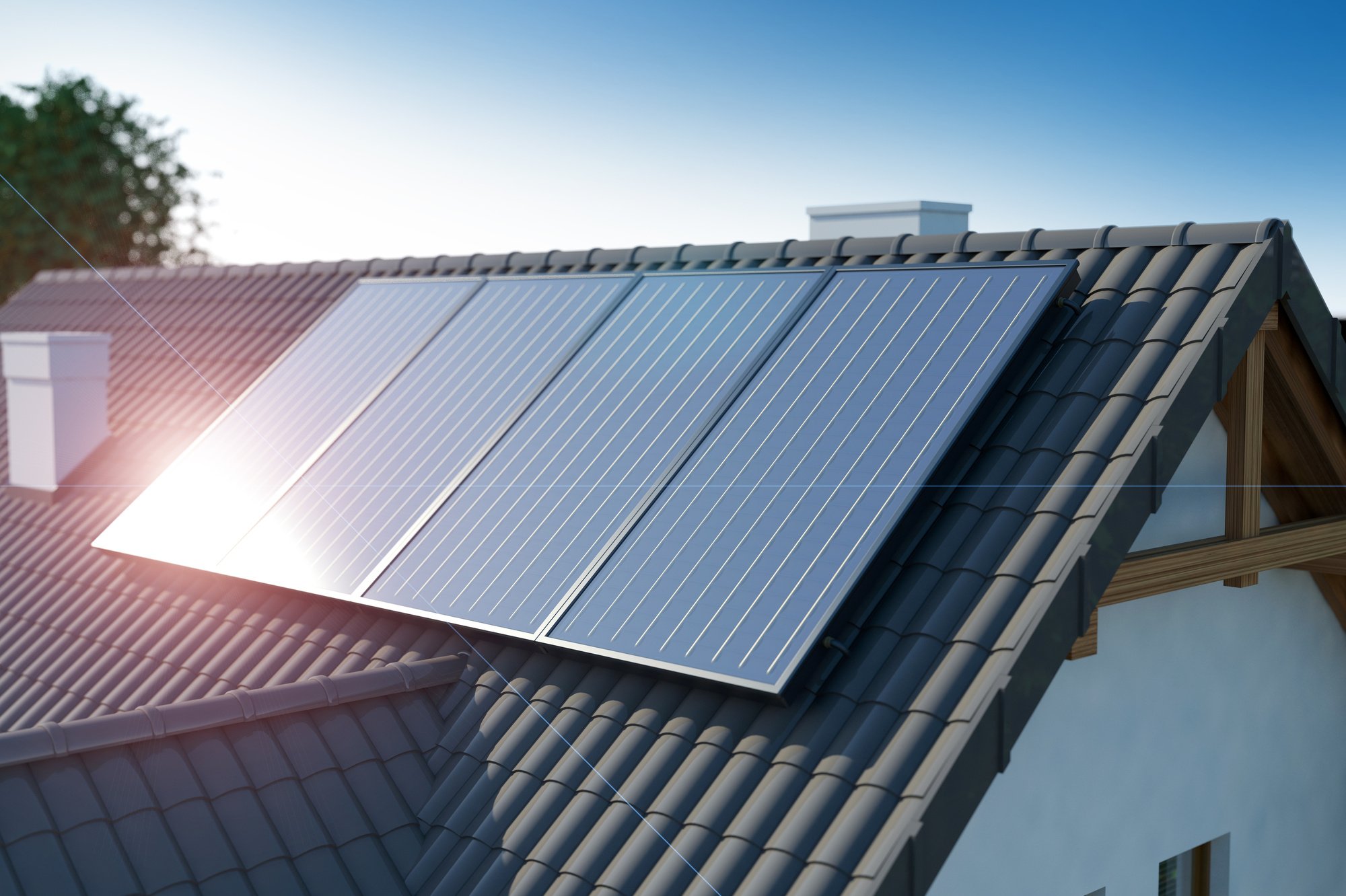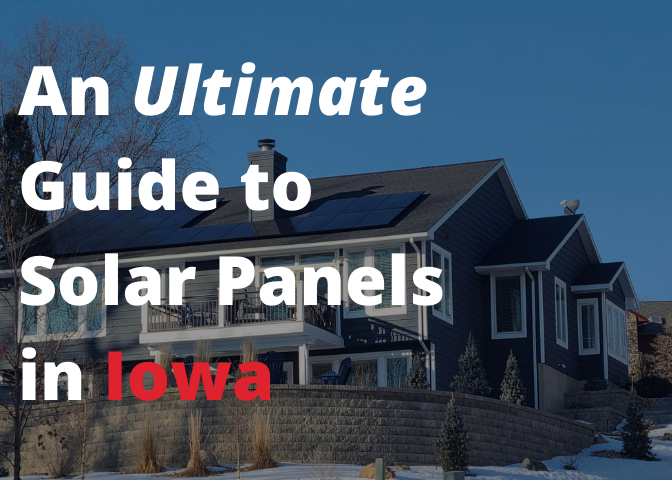A Complete Guide to Financing Solar Panels in Cedar Rapids, IA
-1.jpg)
The solar industry is expanding at a record pace in the United States. Since 2020, it has averaged 33 percent annual growth, totaling more than 130 gigawatts installed nationwide.
The biggest barrier to solar installation is often the upfront costs, which can be significant. The good news is that, with a range of subsidies and financing options, solar installation can become the most logical financial decision you can make about your home.
If you are considering solar for your home in Cedar Rapids, Iowa, you may be wondering what financing options are available. The answer depends on many variables, including the size system you need. This article will walk you through these factors so that you can make the right choices about financing your home solar project.
Advantages of Solar Power
There are many benefits to solar power, but the most obvious one is producing your own electricity. Besides reducing your utility bill, it means your electricity source is much closer to you. This makes solar much safer than traditional electrical sources.
Solar panel installation also comes with various federal, state, and local incentives. These vary by location (see below), but come in the form of rebates, tax credits, and power buyback from utilities.
Solar panel systems, when installed correctly, need very little maintenance. They are durable and you can expect them to function the same 30 years from now as they do on day one.
Residential solar is very reliable. It is a common misconception that solar power is not produced on a cloudy day. While efficiency may diminish, quality solar panels will absorb sunlight through clouds.
Solar is for the environment. After installation, it does not contribute to the emission of greenhouse gas emissions. These contribute to poorer air quality and climate change.
Green energy supplements electricity produced from fossil fuels. It also helps reduce dependence on foreign oil needed for fossil fuel extraction.
Cost of Solar Installation
The big question about solar power installation related to cost is “How much power do I need?” According to the U.S. Energy Information Administration, the average household in the United States uses about 11,000 kilowatt hours (kWh) per year.
This can vary depending on the size of your home and corresponding heating, cooling, and other electrical costs. Things like electric vehicle charging stations, for instance, will drive this amount higher.
Most homes will need a system with between 8.5 kilowatts (kW) and a 10 kW capacity. Right now the average cost for solar panels is $2.66 per watt, including installation. So, a 10 kW system would come in at about $26,000.
However, other factors can drive the total cost up or down. One big one is the type of panel you select.
Solar Panel Types
There are many different kinds of solar panels. These include monocrystalline, polycrystalline, and thin-film variations. Which one you select will impact the final cost of the system.
Monocrystalline panels are the most efficient but will have a higher upfront cost. This is because they are made from a single silicon crystal. The production process creates a wasted byproduct that companies must absorb if they cannot use the remnants in polycrystalline cells (which use multiple silicon crystals).
Polycrystalline panels are less efficient but also more economical. They are suitable for larger roofs exposed to direct sunlight, where efficiency is not a priority.
Thin films are the least efficient of the three types of panels but are very versatile and have a high tolerance for heat. Due to the need for more space, they are commonly used in commercial and industrial buildings.
As the name suggests, they are very thin and have no backing. This makes them lightweight and an attractive option for aesthetic reasons and for roofs that cannot support a great deal of weight.
You can expect to pay between $1.00 and $1.50 per watt for monocrystalline panels. Polycrystalline ones usually cost between $0.70 and $1.00 per watt.
Like other products, there are many different manufacturers of solar panels. These too have distinct prices and can impact the total price tag.
Solar Incentives
Before you do a final tally of what you can expect solar installation to cost, you also should factor in the many incentives available. Starting in August 2022, the federal tax credit for solar energy systems is 30 percent (up from 26 percent in 2020 and 2021). Under current law, this amount will decrease back to 26 percent in 2033 and then to 22 percent in 2034.
There are certain criteria you must meet for claiming federal tax credits. These are pretty straightforward but note that one criterion is that you must either own the system outright or be financing it. Leasing solar panels does not qualify.
While federal tax incentives are the same for everyone, state and local rebates vary by location. Iowa offers a personal tax credit equal to half of the 30 percent federal solar tax credit.
For example, if you install a $20,000 system, you would receive a federal tax credit of $6,000 and a $3,000 tax credit from the state. Note that there is a $5,000 cap for solar tax credits for Iowa residents.
Iowa was one of the first states to pass a “net metering” law. It requires utilities to buy back unused electricity from residential and commercial customers who produce their own electricity from renewable sources.
Some utilities will credit this amount towards your future energy bills, rather than offering cash back. This is still a great way to offset electricity costs.
Explore Financing Options
Once you have a good understanding of the variables above, you will have a better ballpark idea of your potential out-of-pocket solar panel installation price. These upfront costs can still be many thousands of dollars, depending on the size of your home.
For this reason, financing solar panel installation is very common. There are several options available to you in Cedar Rapids, Iowa.
Personal Loans
One is a personal loan. Like a mortgage, these typically come with a fixed interest rate and monthly payments that stay the same over the life of the loan. This allows you to budget for what you will pay even years down the road.
Many personal loans for solar installation come in the form of home improvement loans. These often have higher limits and longer terms to make it more manageable to pay for projects with bigger upfront costs.
Home Equity Loans
Another option for financing a solar installation project is a home equity loan. This is a line of credit that allows you to borrow against the value of the collateral at various times. It can be useful for projects that are completed in multiple stages (which are not very common with solar installation but do exist).
One drawback is that interest rates on home equity loans can fluctuate based on the balance and market factors. These also usually involve an application process that can take a long time and have associated fees.
Solar Company Financing
Another very attractive option for financing your solar project is through installation companies themselves. These are structured very differently, depending on the establishment, but most demand no money down. Some companies allow you to swap your monthly utility bill for the loan payment.
A big advantage of these types of loans is that they are usually unsecured. That means you do not have to put your home or anything else up as collateral to qualify for them.
Like any other loan, financing terms are affected by several factors. These include your credit score and the amount of money you plan to put down.
One version of these types of loans involves third-party ownership. With these, you sign a power purchase agreement (PPA) with the installation company. They own and operate the solar panel system and the electricity it produces, but you reap all the other benefits.
A big advantage to this option is that you do not have to pay any upfront costs. It also means you are not responsible for management or repairs to the solar panel system.
One downside to this arrangement is that you will not be eligible for tax incentives. However, since you are not paying any upfront costs, this downside is negligible.
Determine if Solar Power Is Right for Your Home
One of the best ways to decide if your home is suitable for solar power is to speak with a licensed professional. They can assess your location and roof, as well as your electricity needs and budget. They will be able to give you an accurate estimate of how much money you stand to save based on the system’s potential, as well as financing options.
Find Solar Panel Installation in Cedar Rapids, Iowa
Now that you understand what solar financing options are available in Cedar Rapids, Iowa, you can determine if installing solar panels is right for you. A reputable solar installer will be able to further discuss the right system for your home and the best way to pay for it.
Skyline Solar is one of the Midwest’s top solar installers. Our goal is to empower people to seek sustainable independence. Reach out to us today to discuss installation and leasing options, as well as financing for solar panel projects.


